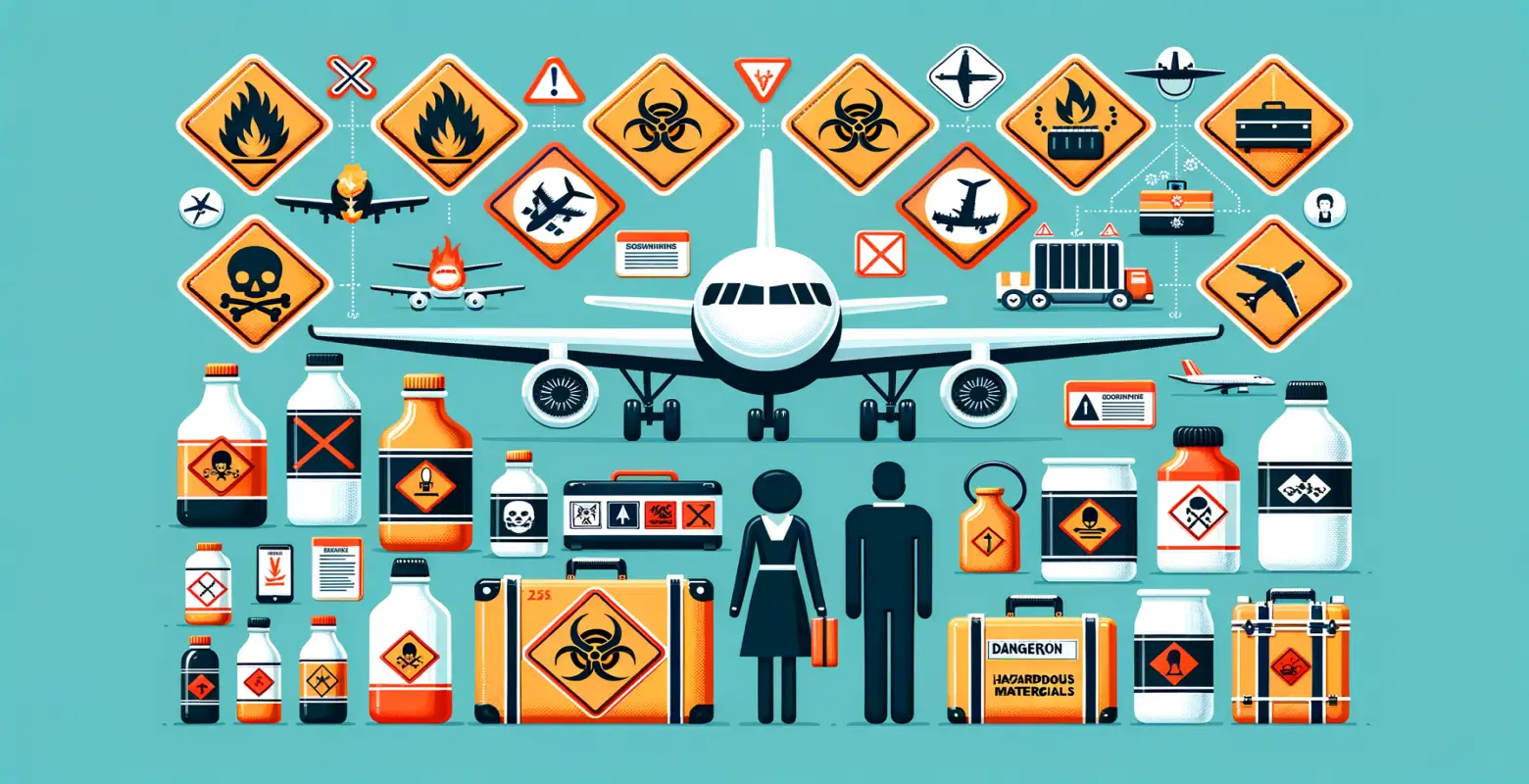Transport of dangerous goods on airplanes - what is worth knowing?
Introduction
Transporting dangerous goods by air is a topic of great importance for the safety of both passengers and airline crews. Due to the specific nature of dangerous goods, which can pose a threat to health, the environment, or safety, their transportation requires special caution. In this article, we will take a closer look at this issue, emphasizing its importance and the principles that regulate the transport of such materials in aviation. We will learn about the regulations in this area, the most common challenges, and possible future developments.
Definition of Dangerous Goods
Dangerous goods are substances that may pose a threat to health, safety, property, or the environment. They include flammable, toxic, corrosive, radioactive, and explosive substances, among others. In the context of aviation, the transport of such materials is particularly demanding because there is no room for error on board an aircraft.
International regulations regarding the transport of dangerous goods in civil aviation are defined by the International Civil Aviation Organization (ICAO) and the International Air Transport Association (IATA). These regulations impose strict requirements regarding the packaging, labeling, and documentation of dangerous materials to ensure flight safety.
Principles of Transporting Dangerous Goods
The transport of dangerous goods by air is strictly regulated by a set of principles and procedures. These regulations aim to minimize the risks associated with the transport of such materials. Here are some key principles:
Categorization and classification: Dangerous goods are divided into nine classes, which encompass various types of hazards, such as explosives, gases, flammable liquids and solids, toxic and infectious substances, radioactive materials, corrosives, and various other hazardous substances.
Packaging and labeling: Dangerous goods must be properly packaged to prevent leaks and damage. The packaging must meet specified strength standards and be properly labeled according to international standards.
Documentation: Each shipment containing dangerous goods must be adequately documented. This documentation should include detailed information about the transported materials, their classification, packaging, and precautionary measures.
Challenges Related to Transporting Dangerous Goods
The transport of dangerous goods in aviation faces many challenges. Here are some of them:
Safety: Ensuring flight safety is the most important challenge. Even the smallest mistake in transporting dangerous goods can lead to catastrophic consequences. Therefore, adhering to all safety procedures is crucial.
Training: Personnel responsible for transporting dangerous goods must be properly trained. These trainings include not only knowledge of regulations but also practical skills related to packaging, labeling, and responding to emergency situations.
Complexity of regulations: Regulations regarding the transport of dangerous goods are complex and may vary depending on the country and the carrier. Therefore, it is important to stay up to date with current regulations and requirements.
Advantages of Air Transport of Dangerous Goods
Despite numerous challenges, air transport of dangerous goods also has many advantages:
Speed: Air transport is the fastest way to transport materials over long distances, which is especially important for materials requiring quick delivery, such as medical substances.
Global reach: Aircraft can reach virtually any place in the world, making them an ideal means of transport for materials that need to be delivered over long distances.
Safety and control: Aviation offers a high level of safety and control, which is crucial for the transport of dangerous goods. Advanced monitoring and control systems enable close tracking of shipments and ensure their safe delivery.
The Future of Transporting Dangerous Goods in Aviation
As technology and regulations evolve, the future of transporting dangerous goods in aviation becomes increasingly promising. Here are some trends that may impact this industry in the future:
Automation: Introducing automation and modern technologies can significantly improve the efficiency and safety of transporting dangerous goods. Monitoring systems based on artificial intelligence can help quickly detect and respond to potential threats.
Strict regulations: As awareness of the risks associated with dangerous materials grows, regulations in this area will become increasingly stringent. This, in turn, may require airlines to implement additional safety measures.
Sustainable development: There is also a growing focus on sustainable development in aviation, which may lead to the development of more environmentally friendly methods for transporting dangerous goods.
Summary
Transporting dangerous goods by air is an extremely important topic that requires strict adherence to regulations and safety procedures. Despite numerous challenges, air transport offers many benefits, such as speed, global reach, and a high level of control. In the future, the development of technology and regulations may further improve the safety and efficiency of such transports. Therefore, it is important to stay up to date with the latest trends and regulations in this field.
If you are involved in the aviation industry or planning to transport dangerous goods, remember the importance of complying with all rules and regulations to ensure the safety and effectiveness of the transport. In this way, you will contribute to protecting the health and lives of people and the natural environment.






Number of comments: 0